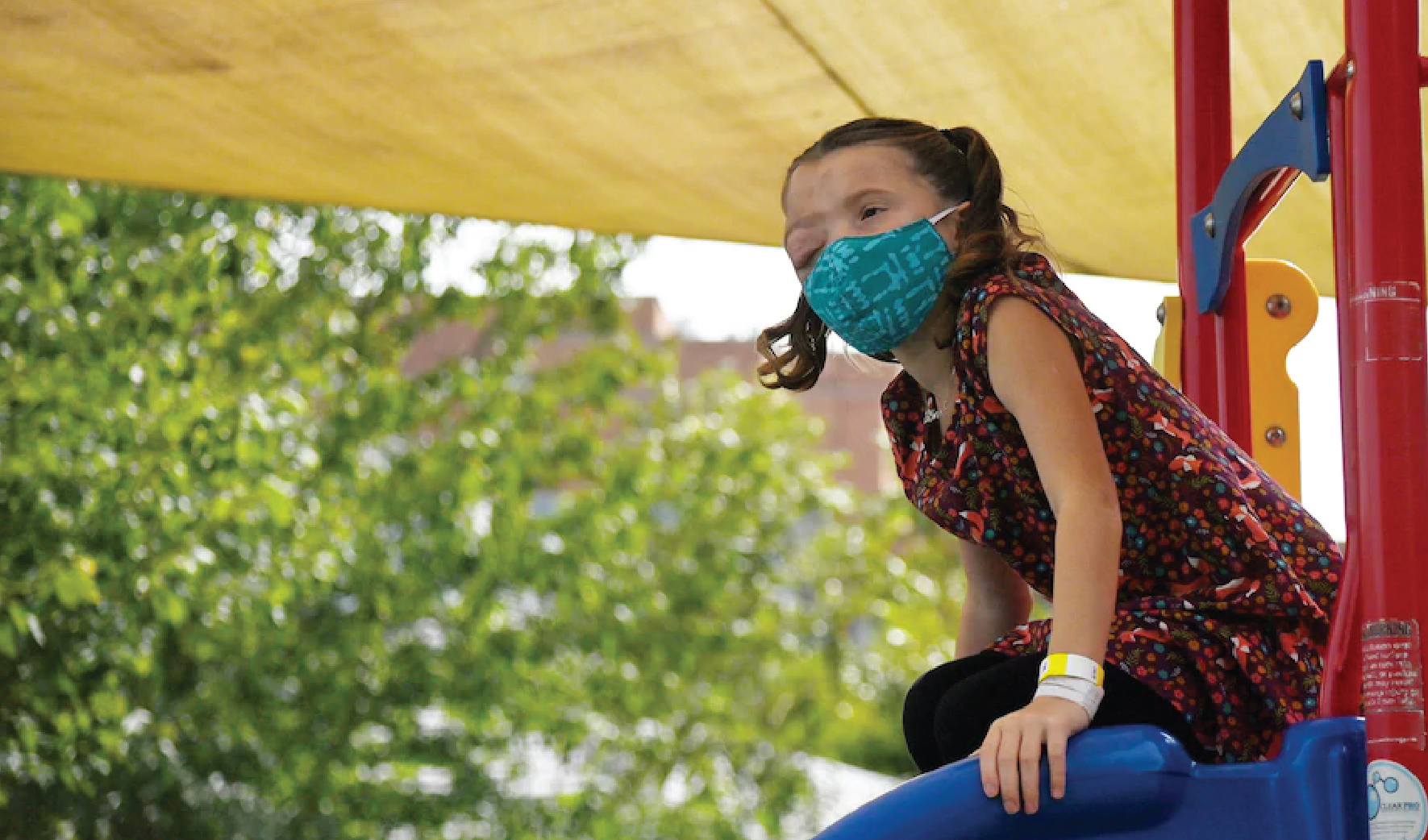What will come of Autumn? A girl, a disfiguring tumor and a clinical trial that offers hope
Author: Theresa Vargas, The Washington Post
Published On: 09/19/2020

On one side of a playground, a white sign branches off in multiple directions, letting children choose whether they want to head toward “Never Never Land,” “Where the Sidewalk Ends” or “No Place in Particular.”
When Autumn Schierling arrives, she darts past the sign and through all those whimsically named places in minutes. She is on the slide. Then she is on the swings. Then she is standing on a tall, fake rock, declaring, “I’m on top of the world!” Her mother, Lindsay Revenew, watches and smiles.
“She’s been through a lot at 10 years old,” she says. The first time she saw her daughter, in those moments after she gave birth, she didn’t understand why the medical staff was scrambling around her and saying, “Oh, my gosh.”
“My baby is beautiful,” she recalls thinking. She still thinks that. But eventually, she too could see how a tumor was distorting her daughter’s face, pulling down the right half, as if gravity suddenly shifted its strength on that side.
Eventually, she watched that tumor cause her daughter’s right lid to drape more and more over an eye that could no longer see, and then remain shut. Eventually, she prepared a PowerPoint presentation so she could help Autumn explain to her classmates why she looked different from them but was in other ways the same. Autumn, now 10, was born with neurofibromatosis type 1, or NF1. As Autumn grew older, the inoperable tumor on her face became larger.
“When kids are mean, and they do make fun of her, that’s when she has the sad days,” Lindsay says. “That’s when she says, ‘Mom, I don’t want to be different’ or ‘Mom, I wish my eye was open.’ But then she has other days when she says, ‘Mom, it’s kind of cool that I’m always winking at everyone.’ ”
The first time they talked to her class, Autumn was in kindergarten, and the girl with caramel-colored hair couldn’t explain much more about her condition beyond, “I was born this way.” When school began this year, Autumn spoke on her own to her fifth-grade class virtually, while her mom sat nearby, out of the screen’s frame. Autumn told her new classmates that she was born with neurofibromatosis type 1, or NF1, and that it can cause children to develop tumors on various parts of their bodies. She also explained why she sometimes has to miss school to head from her home in Kansas to Maryland.
Autumn is one of 50 children who have been participating in a clinical trial that has taken place on the Bethesda campus of the National Institutes of Health since 2015. When it started, the children ranged in age from 3 to 17, lived in states across the country and faced different medical concerns. But they shared this: All had inoperable tumors as a result of NF1 and no option for treatment.
That has since changed. In recent months, the trial has given the NF1 community something that has long been elusive: proven results and hope.
Want to view archived newsletters? Click Here!
Newsletter
Sign up to receive the latest neurofibromatosis news and information in your inbox!
Subscribe